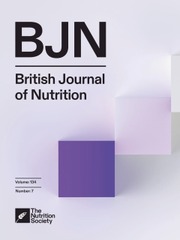No CrossRef data available.
Article contents
Variability of plasma/serum and erythrocyte selenium in the first year of life: a systematic review
Published online by Cambridge University Press: 07 April 2025
Abstract
Se is particularly necessary in infants because of their rapid physical growth period in addition to being indispensable for neurodevelopment. Severe deficiency can lead to cardiomyopathy, hypothyroidism and faltering growth. However, Se can be toxic at high doses. In the paediatric age group, plasma/serum and erythrocyte Se levels seem to increase with age, except in the first year of life. Understanding the variability in Se status during this period can help to identify infants at risk of deficiency and develop strategies for controlling and preventing its consequences. This review aimed to identify the extent and characteristics of the variability of Se status during the first year of life. A search was conducted across five databases to find articles published until 30 July 2024, with no limitations on the language or date of publication. Articles were screened, data were extracted independently by two reviewers, and any disagreement was resolved by a third reviewer. A total of 22 studies comprising 1288 participants were included in this review, 21 of which assessed plasma/serum Se and 12 assessed erythrocyte Se. In the first 4 months of age, serum/plasma Se decreased, remained stable or increased depending on feeding, with an increase in supplemented formula-fed infants and breastfed infants of supplemented mothers. Erythrocyte Se levels showed a declining trend, except in infants fed supplemented formula or breastfed by supplemented mothers. Variability of serum/plasma and erythrocyte Se levels in the first year was associated with maternal Se intake/supplementation and the Se content of the infant’s diet.
Information
- Type
- Systematic Review
- Information
- Copyright
- © The Author(s), 2025. Published by Cambridge University Press on behalf of The Nutrition Society


